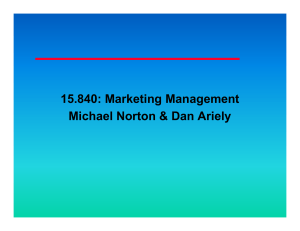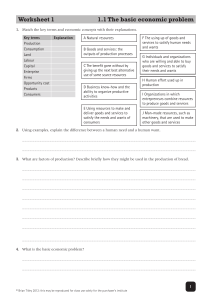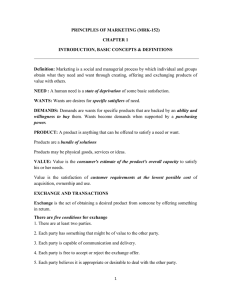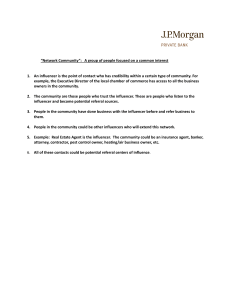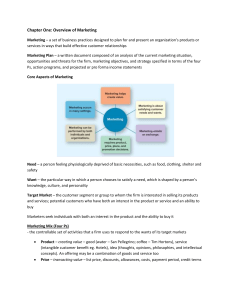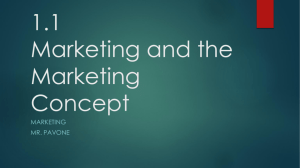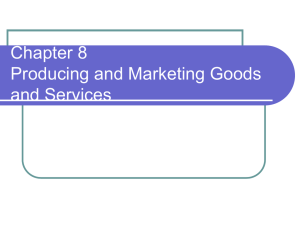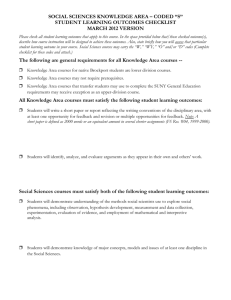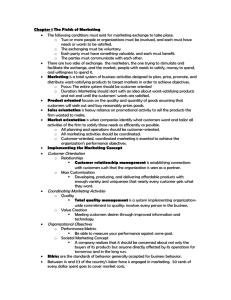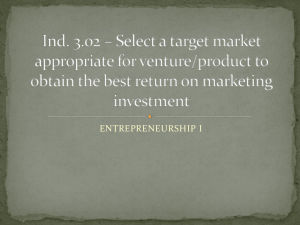CA2018 C2 Intro to Consumer Insight
advertisement
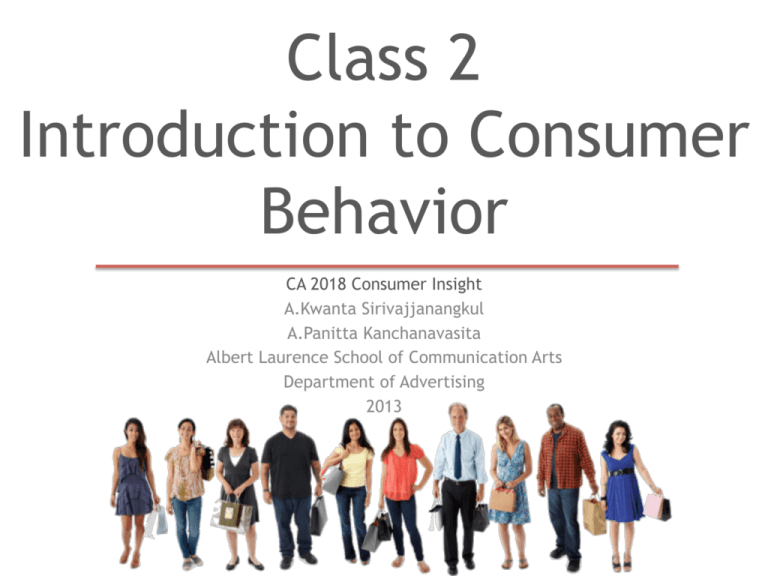
Class 2 Introduction to Consumer Behavior CA 2018 Consumer Insight A.Kwanta Sirivajjanangkul A.Panitta Kanchanavasita Albert Laurence School of Communication Arts Department of Advertising 2013 Consumer behavior • Consumers behavior is more than buying things; it also embraces the study of how having things affects our lives and how our possessions influence the way we feel about ourselves and about each other. • It is the study of people and the products that help to shape their identities. • We are all consumers. • Study not just only the models and studies paper, it is an applied science. Apply the findings to life in the real world. Chapter Outline • What is Consumer behavior? • Why is consumer behavior a process? • Why do marketers need to understand the wants and needs of different consumer segments? • Marketing impact on consumers. Consumer Behavior The study of the process involved when individuals or groups select, purchase, use, and dispose of products, services, ideas, or experiences to satisfy needs and desires. Consumer behavior is a process It is not only when consumers purchase products/services. The Purchaser and user of a product might not be the same. Influencer, the one who providing recommendations for or against it. PrePurchase Purchase PostPurchase Consumer’s Perspective Marketer’s Perspective How does consumer decide? What are the sources of informa4on? A?tudes of consumer toward products formed? What cues do consumers use to compare products? Is acquiring a product a stressful or pleasant experiences? What does it says? How do situa4onal factors, such as 4me pressure or store displays, affect the consumer’s purchase decision? Does it provide pleasure or perform its intended func4on? How does it disposed? What determines whether a consumer will be sa4sfied with a product and whether they will buy it again? Do they tell others about your products. Figure 1.1 Stage in the consumer process Purchaser, User, Influencer. Why we have to study consumer behavior? • Because consumers impact on marketing strategy. • To understanding consumer behavior is a good business. • Basic principle of marketing à provide product or services to satisfy their needs. à How? To understand them. Consumers are different!! How we divided them up Market segmentation Demographic Geographic • Age, Gender, Family structure, Social class and income, Genera4on, Race, and Ethnicity • Region, Size of metropolitan area, Popula4on density, climate Psychographic -­‐ Lifestyles • Ac4vi4es, Interestes, Opinions, A?tudes, Values. Need and Wants A need is a basic biological motive; a want represents one way that society has taught to satisfy the need. Marketing’s Impact on Consumers • Popular culture – Marketing stimuli surround us as advertisements, stores and products compete for our attention and our money. – Consisting of the music, movies, sports, books, celebrities, and other forms of entertainment, is both a product of and an inspiration for marketers. It also affects our lives in more farreaching ways. Consumer-Generated Content If you are not watching, you will be so out.” “ถ้าคุณไม่ได้ดู พรุ่งนี้เช้า คุณจะคุยกับเขาไม่รู้เรื่อง” -Tonight show- Come to the era where everyday people easily tell other about products, brands on their social networking site such as twitter, facebook, and Instagram. Even film their own opinion and post it on YouTube. Their own Consumerspace : Where consumers dictate to companies the type of products they want and how, when and where they want to learn about them. “People often buy products not for what they do but for what they mean” One of the fundamental premises of the modern field of consumer behavior Type of relationships a person might have with a product: • Self-concept attachment – The product helps to establish the user’s identity. • Nostalgic attachment – The product serves as a link with past self. • Interdependence – The product is a part of the user's daily routine. • Love – The product elicits emotional bonds of warmth, passion, or other strong emotion. The Global Consumer The majority of people on earth live in urban centers – it has been predict that the number of “Megacities” will grow to 26 by 2015. The marketing strategies will move towards a “Global consumer culture”. Think Global, act local s n o i t s e u Q Any
